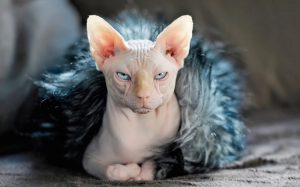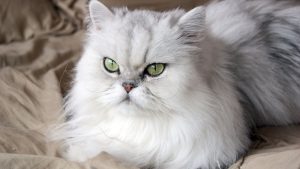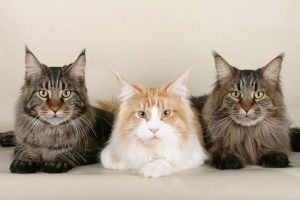The British Shorthair is a cat breed that is currently very popular among animal lovers. What is so special about them that makes so many people fall in love? Let’s join Know All Animals to learn more about this breed and how to care for them.
British Shorthair Details
- Size: Medium to large – compact and muscular body
- Weight:
- Male: 5–9 kg (11–20 lbs)
- Female: 3–5.5 kg (6.5–12 lbs)
- Length: Approximately 50–60 cm (including tail)
- Coat: Short, dense, plush; feels like velvet
- Colors: Wide range – blue (gray) is the most iconic, also cream, white, black, lilac, tabby, bicolor…
- Eyes: Large, round; common colors: copper, gold, blue (in colorpoints)
- Tail: Medium length, thick base, rounded tip
- Temperament: Calm, easygoing, loyal, independent, good with kids and other pets
- Vocalization: Quiet, soft meows; not overly vocal
- Lifespan: 12–17 years on average
- Intelligence: High – easily trained, especially with food motivation
- Exercise Needs: Low to moderate – prefers lounging but enjoys occasional play
- Grooming: Low maintenance – weekly brushing is enough
- Health Concerns: Obesity, hypertrophic cardiomyopathy (HCM), dental issues
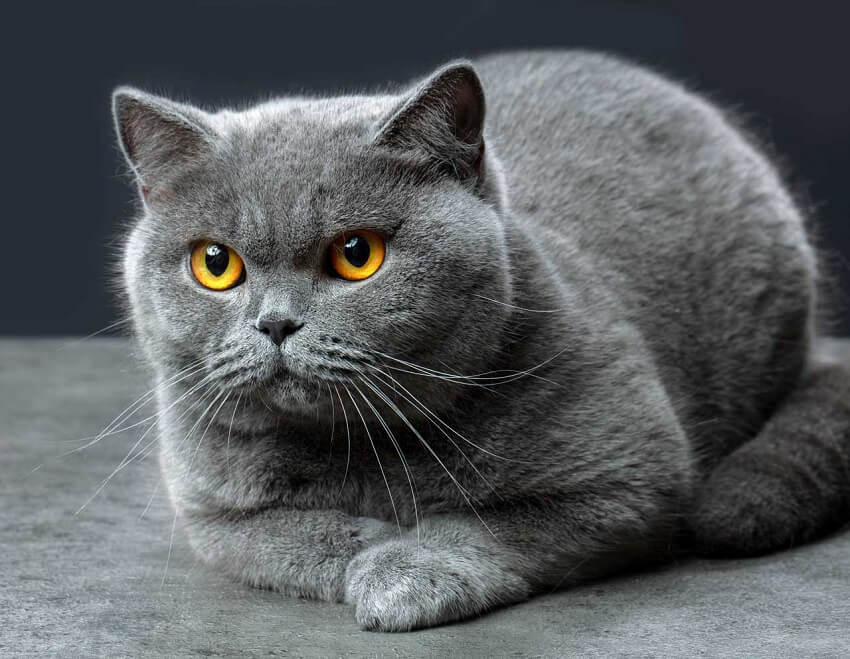
1. Origin and Development History
The British Shorthair is one of the oldest and most deep-rooted cat breeds in the United Kingdom. The history of this breed dates back to the Roman invasion of the British Isles, which took place from 43 to 410 AD.
1.1. The Beginning: Roman Cats and Early Development
When the Roman legions came to Britain, they brought with them cats imported from Egypt to hunt rats and protect their food and military supplies. These cats were selectively bred to endure the difficult journeys and harsh weather of Britain. From there, they began to breed with native wild cats, creating a generation of cats with strong, flexible bodies well-suited to the living conditions in Britain. They spread throughout the countryside and cities, playing an important role in catching mice on farms and in residential areas.
With their cute appearance, plump bodies, and calm demeanor, they quickly won the hearts of the British people and began to be selectively bred and raised as pets in homes. At this time, they became known as a characteristic British breed, called the “British Blue” because of their distinctive blue-gray coat.
1.2. The Turning Point for the British Shorthair: Harrison Weir
Harrison Weir (1824-1906) is considered the most influential person in the history and development of the modern British Shorthair. He was the world’s first professional cat breeder and the organizer of the first-ever Cat Show in 1871 at Crystal Palace, London. At this event, a blue-gray British Shorthair owned by Weir won the title of Best in Show, a significant milestone for the recognition and development of this breed.
Weir laid the foundation for the selective breeding of the British Shorthair, which helped to define the breed’s standards for appearance and temperament. He also founded The National Cat Club in 1887, contributing to making the British Shorthair a beloved breed in the UK and worldwide.
1.3. A Period of Crisis: The World Wars and Near Extinction
During World War I (1914-1918) and World War II (1939-1945), the British Shorthair breed was severely affected. Food shortages and bombings made it difficult to care for pets, including cats. The number of purebred cats plummeted, pushing the breed to the brink of extinction.
1.4. Revival and Development: Breeding and a Strong Recovery
After World War II, breeders went to great lengths to revive the British Shorthair breed. They began crossbreeding the surviving cats with other breeds, such as Persian, Russian Blue, French Chartreux, and Burmese cats. This combination not only helped to restore their numbers but also improved the British Shorthair’s physical characteristics.
In 1950, a blue-gray British Shorthair named Brynbuboo Little Monarch won the title of Grand Champion from the Governing Council of the Cat Fancy (GCCF), confirming the breed’s strong comeback. Brynbuboo Little Monarch is considered the ancestor of many modern British Shorthairs and is a symbol of the breed’s perfected appearance and temperament.
1.5. International Recognition
The British Shorthair breed is officially recognized by many international organizations, including The International Cat Association (TICA) and the Cat Fanciers’ Association (CFA). It is one of the most popular cat breeds in the world, known for its adorable appearance, gentle personality, and superior intelligence.
1.6. Famous British Shorthairs
British Shorthairs are not only popular among pet lovers but also owned by many famous people. One of the most famous depictions of this breed is the Cheshire Cat from Lewis Carroll’s Alice in Wonderland, which was inspired by a British Shorthair.
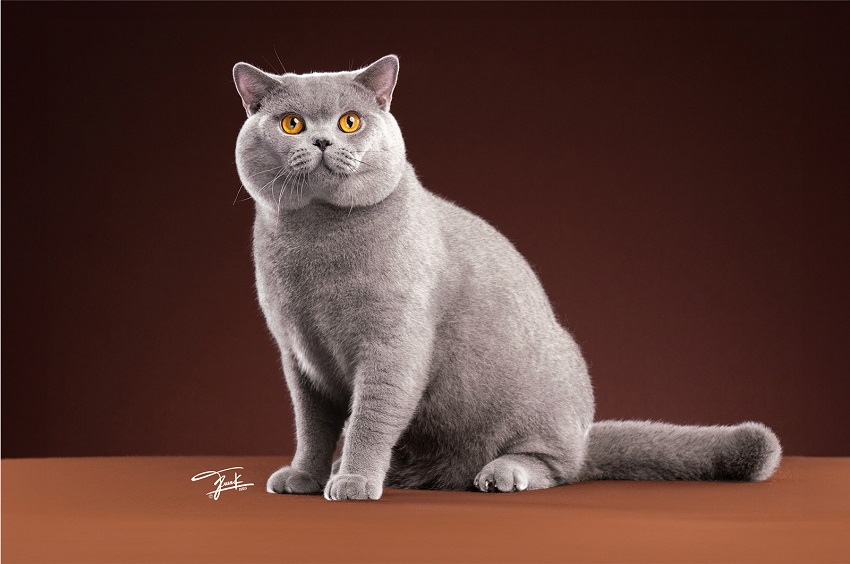
2. Physical Characteristics
The British Shorthair has a recognizable appearance with the following key features:
- Body: Well-proportioned, muscular, and sturdy. Males are typically larger than females.
- Weight: 3.5 – 7.5 kg (7.7–16.5 lbs).
- Body Length: 55 – 65 cm (21.5–25.5 inches).
- Head: Round with chubby cheeks, creating a cute appearance.
- Eyes: Large and round, in various colors such as yellow, green, amber, and blue. White and silver cats, in particular, may have unique odd-colored eyes.
- Coat: Short, dense, and soft. They come in a wide range of colors, including blue-gray, white, black, lilac, golden, silver, bicolor, and tortoiseshell.
Popular British Shorthair Colors:
- White British Shorthair: To get the most beautiful white British Shorthair mix, try crossing a British Shorthair with a Persian cat.
- Tabby British Shorthair: The combination of a tabby cat and a British Shorthair created this breed with a very distinctive color.
- Bicolor British Shorthair: This is a two-colored breed, with the Tuxedo cat being the most famous type.
- Himalayan British Shorthair: A cross between a British Shorthair and a Siamese cat, though the offspring often display more Siamese characteristics than British Shorthair traits.
3. Temperament
The British Shorthair is not only charming in appearance but also possesses a lovely and endearing personality:
- Calm and Independent: They are not overly dependent on their owners and enjoy their private space.
- Friendly and Sociable: They easily get along with children, the elderly, and other pets in the home.
- Intelligent and Patient: They are capable of learning and following daily routines.
- Slightly Lazy: British Shorthairs love to sleep a lot and are not fond of overly active play.
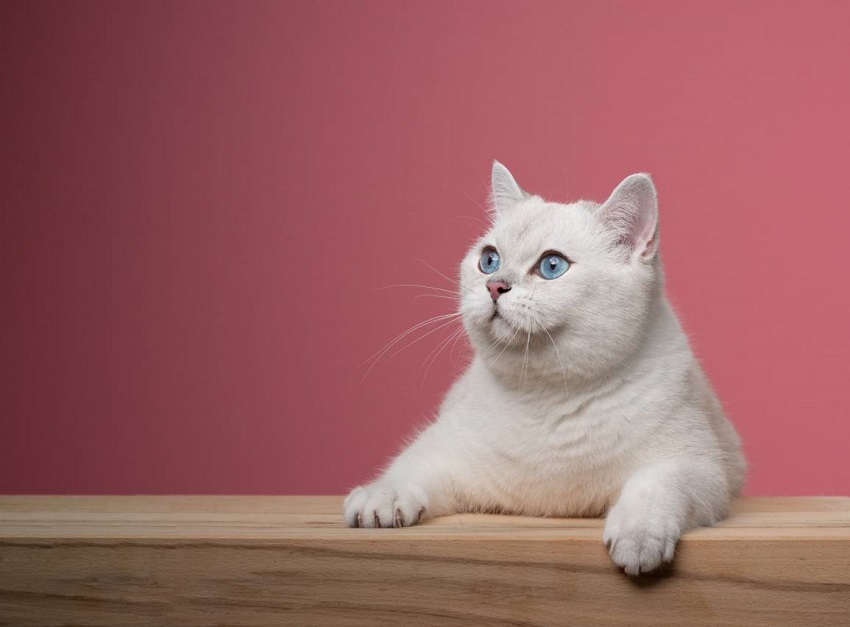
4. How to Raise and Care for a British Shorthair
The British Shorthair is a healthy, easy-to-care-for breed, loved for its plump, cute appearance and calm, friendly personality. To effectively raise and care for a British Shorthair, you need to pay attention to their living environment, diet, hygiene, training, and health. Below are detailed instructions for your reference.
Keeping them active helps prevent your cat from becoming overweight and keeps their mind sharp. You can play with your cat a few times a day, letting them exercise indoors to help them use up energy.
4.1. Living Environment
British Shorthairs are well-suited for both small apartments and large homes. They can tolerate cold weather and need to sunbathe every day. They don’t require a lot of space, just a clean, well-ventilated area to live comfortably. You should prepare some basic items like a cat bed, a litter box, cat litter, and some toys to make them feel at home.
4.2. Exercise Needs
British Shorthairs aren’t overly active or hyperactive, but they still need light exercise to stay in shape and healthy. Simple games like a cat wand, laser pointer, or toy mice are perfect for playtime. You can also install a cat tree so they can climb, scratch, and strengthen their muscles.
Keeping them active helps prevent your cat from becoming overweight and keeps their mind sharp. You can play with your cat a few times a day, letting them exercise indoors to help them use up energy.
4.3. Grooming and Hygiene
Although the British Shorthair’s coat doesn’t require a lot of care, regular grooming is still very important to keep their fur smooth and remove loose hair.
- Brushing: You should brush your cat 1-2 times a week, and increase the frequency to 2-3 times a week during shedding seasons (spring and autumn).
- Nail Trimming: Trim their nails twice a month to prevent them from getting too long, which can be inconvenient for movement or cause them to accidentally damage furniture.
- Cleaning Ears and Eyes: Check and clean your cat’s ears and eyes every week with a specialized cleaning solution and a soft cotton pad. If their ears or eyes show signs of discharge or a bad odor, you need to take them to a vet.
- Brushing Teeth: Brush their teeth 2-3 times a week with a toothbrush and toothpaste specifically for pets to prevent dental diseases.
4.4. What to Feed a British Shorthair
British Shorthairs are carnivores, so their diet needs to be rich in protein and nutritionally balanced to ensure their health.
Food:
- Dry Kibble: This is a convenient option for busy families. In Vietnam, there are now high-quality kibble brands specifically for British Shorthairs (BSH), such as Nutrience Kitten, Royal Canin British Shorthair Kitten, Taste of the Wild, etc. These kibble brands provide high protein and ensure proper development. For adult cats, you can use Royal Canin British Shorthair Adult, Nutrience Subzero, Taste of the Wild, etc.
- Fresh, Homemade Food: This includes fresh pate, chicken breast, liver, and various types of fish. Homemade food is diverse and depends on the needs and circumstances of each family. However, it’s important to avoid adding spices or using unusual foods that could affect your cat’s digestion.
- Supplements: In addition to their main meals, you can supplement their diet with fresh pate, treats, or canned wet food to ensure they get enough nutrients and make them more enthusiastic about eating.
Important Notes:
Avoid foods with spices, onions, garlic, caffeine, or chocolate, as these can be dangerous to your cat’s health. British Shorthairs should be fed 2-3 meals a day, and they should always have fresh water available 24/7 to prevent dehydration.
4.5. Training a British Shorthair
British Shorthairs are intelligent and easy to train. They can learn to use the litter box correctly, recognize their name, and even get used to some simple games.
- Litter Box Training: When you first bring a cat home, you need to show them how to use the litter box. Place the litter box in a quiet spot, not too far from their main living area, and change the litter frequently to keep it clean.
- Toys and Scratching: British Shorthairs love to play with feather toys, laser pointers, or toy mice. Make sure you provide enough scratching posts to prevent your cat from scratching up your furniture.
4.6. Health and Common Ailments
British Shorthairs are generally healthy, but they can still be susceptible to some genetic or environmental issues. Here are some common diseases and how to prevent them:
- Hypertrophic Cardiomyopathy (HCM): This is a common hereditary heart disease in cats. It can cause many complications and even be life-threatening if not detected early.
- Eye Diseases: British Shorthairs are at risk of developing keratitis, conjunctivitis, or cataracts.
- Urinary Tract Diseases: Issues like cystitis and kidney stones are common in cats who don’t get enough water or have an unbalanced diet.
Prevention:
To prevent these diseases, you should take your cat for regular check-ups at a veterinary clinic, ensure they are fully vaccinated, and deworm them according to the schedule. Furthermore, always provide a healthy diet, clean water, and a hygienic living space for your cat.
Important Notes:
Avoid foods with spices, onions, garlic, caffeine, or chocolate, as these can be dangerous to your cat’s health. British Shorthairs should be fed 2-3 meals a day, and they should always have fresh water available 24/7 to prevent dehydration.
4.7. With Children and Other Pets
British Shorthairs are known for being a friendly and adaptable breed. They are well-suited to live in families with children or other pets:
- With Children: British Shorthairs are quite patient and rarely get annoyed with small children. They can play gently and are not easily agitated.
- With Other Pets: This breed gets along well with other pets in the home, such as dogs or other cats, if they are socialized from a young age. However, to ensure a good relationship, it’s very important to introduce new pets slowly.
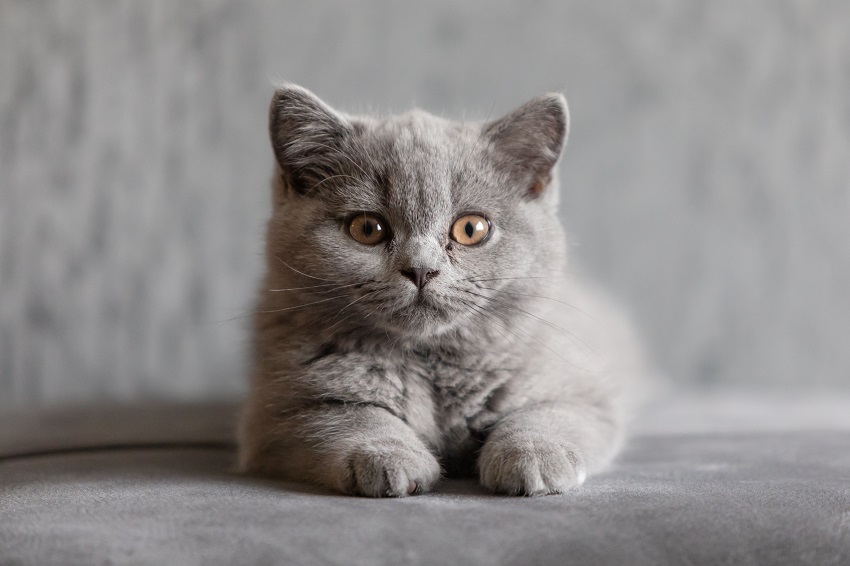
5. How Much Does a British Shorthair Cost?
The price of a British Shorthair in the U.S. and Australia varies depending on the coat color, lineage, gender, and the reputation of the breeder or cattery. Here are the average updated prices:
In the U.S. (USA):
- Pet quality cats (without papers): Approximately $800 – $1,500.
- Purebred cats with papers and a clear pedigree: Approximately $1,500 – $3,000.
- Blue British Shorthair: This is the most common color, priced at $1,500 – $2,500.
The price can increase if the cat comes from a reputable cattery, has been fully vaccinated, spayed/neutered, or includes a health guarantee.
In Australia:
- Pet quality cats: Approximately AUD $1,200 – $2,500 (equivalent to about $800 – $1,650).
- Show quality cats (for shows or breeding): Approximately AUD $2,500 – $4,000 (about $1,650 – $2,600).
Cats in Australia are often slightly more expensive due to strict regulations on animal imports and the high quality of certified breeders.
6. FAQs
1. Are British Shorthair cats good pets for families?
Yes, British Shorthairs are known for their calm and gentle nature, making them excellent pets for families with children or other pets. They are affectionate without being overly clingy and adapt well to indoor living.
2. How much grooming does a British Shorthair need?
British Shorthairs have dense, plush coats but require minimal grooming. Brushing them once or twice a week is usually enough to keep their coat healthy and reduce shedding.
3. Do British Shorthair cats have any common health issues?
While generally healthy, British Shorthairs can be prone to hypertrophic cardiomyopathy (HCM) and obesity. Regular vet checkups, a balanced diet, and moderate exercise can help prevent most health problems.
The British Shorthair is a perfect choice for families due to its adorable appearance, gentle nature, and easy care. However, it’s crucial to do your research before buying to ensure you choose a healthy, suitable cat. When you decide to adopt or buy a British Shorthair, always carefully consider the cat’s origin, health, and any warranty policies from the seller. Choosing to buy from a reputable cattery or adopting from a rescue organization will give you more peace of mind about your new pet. We hope this article helps you better understand the British Shorthair breed and find the perfect cat for you.
References: https://en.wikipedia.org/wiki/British_Shorthair

